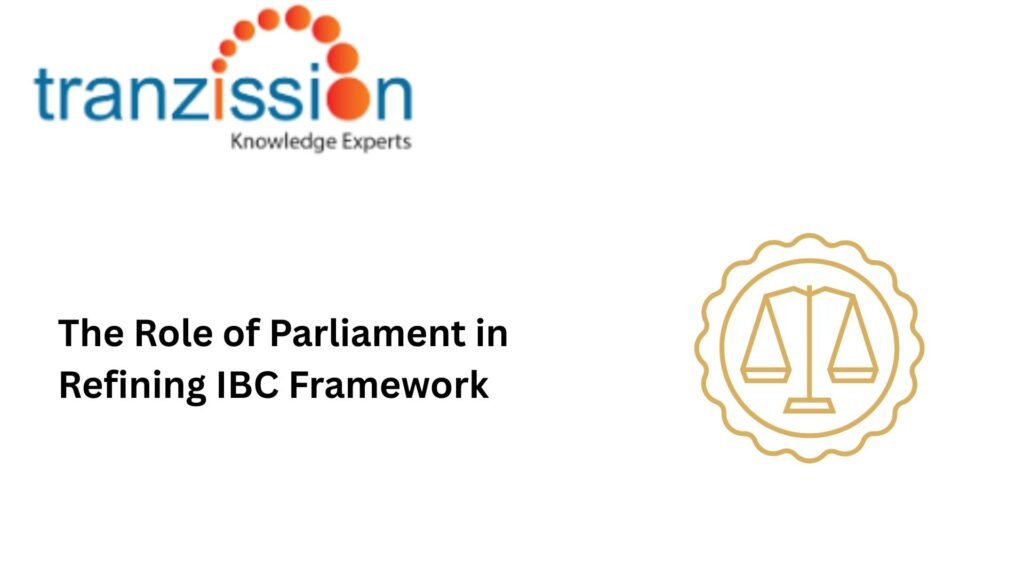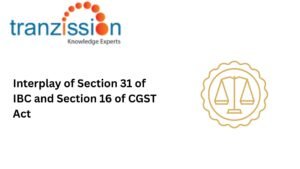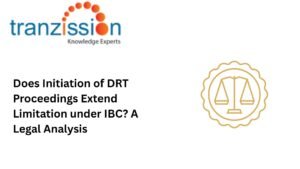
The Role of Parliament in Refining IBC Framework

Table of Contents
The Parliament in Refining IBC, the main law governing insolvency and bankruptcy proceedings in India, in 2016. This means that the Parliament is the body that created the legal framework for the IBC. It was passed to address inefficiencies in existing laws and objectives of time-bound resolution, asset value maximization, and entrepreneurship promotion. The IBC has undergone several amendments to strengthen the insolvency resolution process and ensure proper implementation of its provisions.
IBC Amendment Act 2017
The IBC (Amendment) Act, 2017, aimed to address shortcomings in the original IBC, particularly concerning the eligibility of resolution applicants and the resolution process itself. The amendment clarified who could submit resolution plans and those who may be considered undesirable to manage a company after default.
IBC Amendment of 2018
The Amendment of 2018 clarified the definition of “financial creditors”, particularly regarding real estate projects. It ensured that homebuyers are recognised as financial creditors, entitling them to representation on the Committee of Creditors (CoC). This Act also lowered the voting threshold for decisions taken by the CoC from 75% to 66%.
IBC Amendment Act 2019
The IBC Amendment Act 2019 introduced several key changes, including a mandatory 330-day timeline for completing the corporate insolvency resolution process (CIRP) and clarifying the definition of “resolution plan” and making it binding on various stakeholders, including government authorities.
IBC Amendment Act 2020
The Amendment Act 2020 was enacted to address various aspects of the insolvency process, particularly concerning financial creditors and defaults during the COVID-19 pandemic. It included provisions to limit the initiation of the process for defaults arising during a specific period, and it introduced a threshold for initiating proceedings by certain financial creditors, such as homebuyers.
IBC Amendment Act 2021
Passed in 2021, the IBC Amendment Act 2021 introduced a “pre-packaged insolvency resolution process” (PPIRP) for micro, small, and medium enterprises (MSMEs) to address financial distress more efficiently. This process allowed MSMEs to resolve their insolvency by reaching a resolution process with creditors outside of the traditional CIRP.
Parliament’s Response to Judicial Developments
Addressing Judicial Interpretations:
Landmark judgements in insolvency law often establish crucial legal precedents and shape the understanding and application of insolvency laws. These judgments can have far-reaching effects on the legal landscape and impact how insolvency processes are conducted. The Swiss Ribbons case addressed the differential treatment of operational and financial creditors, specifically whether the operational creditors’ lack of representation and voting rights in the CoC was unconstitutional. The Supreme Court upheld the IBC’s provisions, emphasising the role of financial creditors in assessing the viability of the corporate debtor. The Essar Steel case focused on the rights of financial and operational creditors during CIRP, further highlighting the importance of equitable treatment. The doctrine of commercial wisdom has been reinforced through several Supreme Court judgments, including K. Sadhikar v. Indian Overseas Bank. The IBC and the courts strive to balance the commercial wisdom of the CoC with the need to ensure that the CIRP is conducted fairly and transparently, safeguarding the interests of all stakeholders.
Read more : What is Form G in IBC – Invitation for Expression of Interest
Balancing Stakeholder Interests:
Balancing stakeholders’ interests under the IBC requires a delicate approach, as different parties have varying priorities and needs. The IBC aims to achieve a fair and just resolution, considering the needs of creditors, employees, shareholders, and other interested parties. It, thus, ensures fair play between financial and operational creditors and enhances creditor protection without undermining debtor rehabilitation. This is crucial for maximising asset value, promoting entrepreneurship, and ensuring the availability of credit.
Strengthening the Institutional Framework
Role in Empowering Regulatory Bodies:
The regulatory authority of the Insolvency and Bankruptcy Board of India (IBBI) focuses on professionalizing insolvency services. It sets regulations, develops service providers, and monitors their performance. The goal is ot maintain high standards of ethics and professionalism within the insolvency system. The National Company Law Tribunal (NCLT) is the primary adjudicating authority for insolvency and bankruptcy for corporate entities, including corporate debtors and personal guarantors, as per section 60. The National Company Law Appellate Tribunal (NCLAT) is the appellate body for decisions made by the NCLT, and reviews and adjudicates appeals, thus ensuring that the insolvency process is conducted fairly and efficiently. The IBBI empowers NCLT and NCLAT by ensuring that the service providers involved in the insolvency process are competent and adhere to ethical standards. This contributes to the smooth functioning of the NCLT and NCLAT in their roles as adjudicating authorities.
Creating Accountability:
Legal reforms in the IBC can improve transparency and reduce delays in the CIRP and liquidation process. It can reduce the gaps in the insolvency framework, such as facilitation of cross-border insolvency and timely resolutions
Policy-Driven Refinements Through Parliamentary Oversight
Parliamentary Standing Committees:
The Parliament in Refining IBC Standing Committees play a crucial role in scrutinising the IBC and ensuring its effective implementation. These Committees, composed of Members of Parliament in Refining IBC, review government policies, bills, and regulations related to the IBC. They examine the working of the IBC, identify potential issues, and provide recommendations for improvements.
Alignment with Global Best Practices:
The principles of the UNCITRAL Model Law on Cross-Border Insolvency can be adopted by India to improve the IBC provisions on cross-border insolvency. The Parliament in Refining IBC has introduced policy reforms to attract foreign investment by enhancing certainty and creditor protection.
Challenges and the Way Forward
One of the main issues is the delays in the resolution process. To improve the coordination between the legislative and executive bodies, it is important to reduce judicial dependency through clearer statutory drafting.
The current framework fails to include multiple debtors in one insolvency case. Legal amendments to the IBC can include group insolvency, resolution of financial service providers, and a framework for individual insolvency.
Conclusion : Parliament in Refining IBC
The Parliament in Refining IBC has played a crucial role in shaping the IBC from a static code to a dynamic insolvency resolution mechanism. Further, ongoing legislative vigilance ensures that the Code remains resilient, creditor-friendly, and aligned with global standards. Potential legislative amendments to the IBC depend on continuous feedback, judicial trends, and economic exigencies.





